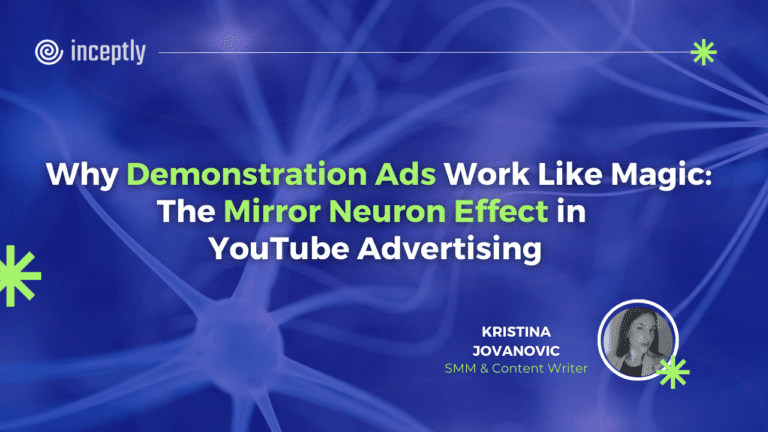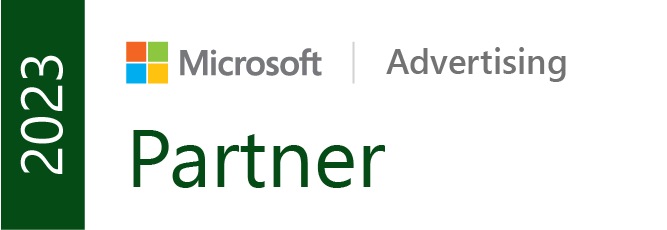
If you’re spending any time on YouTube, you’ve very likely seen this iconic ad by Stephen Ridley, with over $6M in ad spend:
“If you have an hour this week… you can learn 100 songs on the piano by learning just 4 chords.”
In less than 5 seconds, this ad hooks you.
In 10 seconds, you feel like you’re already halfway to being a piano player.
And by the end? You’re itching to try it yourself.
→ That’s not just clever scripting.
→ That’s not just a good offer.
That’s psychology at work!
More specifically — so called mirror neurons.
In this article, we’re breaking down exactly why this style of ad works so powerfully (yes, even for products totally unrelated to piano lessons)…
…and how you can apply the same winning principles to your own YouTube ads in order to see incredible results!
Want to brainstorm with our team on new ways to scale your business with YouTube Ads (and other performance video platforms)?
Join us for a free YouTube ad brainstorming session👇
Let’s get into it.
What Are Mirror Neurons (and Why Should Marketers Care)?
Mirror neurons are special brain cells that fire both when you perform an action and when you observe someone else doing it.
Discovered in the 1990s by scientists in Italy studying monkeys, these neurons are a big reason why:
- We flinch when someone else stubs their toe
- Babies learn by watching
- We feel emotionally moved by movie characters
In marketing? Mirror neurons are the reason why a well-structured demo video can drive people from “meh” to “take my money.”
The Mirror Neuron Hack for YouTube Ads
Here’s why this matters in direct response:
👉 When people see someone using your product, their brain simulates the experience.
👉 When the person in the ad is relatable, the viewer projects themselves into that scene.
👉 When the result looks satisfying, their brain lights up like they just achieved it.
And just like that, you’ve skipped the logical resistance and gone straight to visceral desire!
YouTube Ads That Trigger Mirror Neurons
Let’s say you’re running an ad for a wellness supplement.
Option A (talking head):
“This supplement contains XYZ ingredients proven to support healthy digestion.”
Yawn.
Option B (mirror neuron friendly):
A woman wakes up, takes her supplemet, smiles and glides through the day. That woman looks… light, focused, energized, satisfied.
Your brain watches and thinks, I want to feel like that.
That’s the power of visual demonstration.
Same product. One ad speaks to logic. The other feels like a transformation.
How to Activate Mirror Neurons in Your Ads
You don’t need a neuroscience degree.
Just follow this:
✅ Show the action
No “telling”, or better said, not ONLY telling — show someone doing the thing your product enables. Pouring, applying, turning on, transforming.
Take this Ka’Chava ad as an example:
Instead of just telling viewers it’s easy to make or tastes great, the ad shows people actually scooping their powder for the meal shake, pouring water, blending, and drinking the shake. It visually demonstrates the product in action, making the benefits feel real and achievable.
The mix of polished brand shots and UGC-style clips adds credibility and makes it feel relatable.
✅ Use relatable people
Cast people your audience identifies with — this is what makes the mirror effect work. Age, lifestyle, tone – it all matters.
Here’ an ad by Mason Cain with nearly 1 mill in estimated ad spend as an example:
The ad features everyday men — husbands, fathers, Christians — openly sharing struggles with addiction, shame, and faith.
Their language, appearance, and stories feel raw and real, not overly polished or influencer-y. This makes it super easy for the target audience (likely Christian men struggling with the same issue) to see themselves in these stories and think “that’s me.” Total mirror effect in action.
✅ Highlight the result
Use body language, facial expression, and/or environment, depending on the product/service, to show what’s possible after using your product.
Here’s an instant translator ad as an example:
This ad doesn’t just talk about the translator — it shows the result in action: real-life travel situations where language barriers disappear instantly.
You see the person confidently communicating with locals in German, French, and Spanish, without stress or confusion.
The environment (airports, asking for directions) + the calm, successful interactions visually demonstrate the product’s promise: stress-free, smooth communication anywhere in the world.
Framework: Mirror Neuron Ad Formula
To add on, here’s a plug-and-play structure you can save and use:
- Identify the transformation
→ What physical or emotional change does your product create? - Show the “before” state
→ Let the viewer feel the problem for a moment. - Demonstrate the “action”
→ The person uses the product in a clear, visceral way. - Reveal the “after”
→ Let the body language and visuals tell the story: relief, success, happiness, confidence. - Close with a direct CTA
→ Don’t overexplain. The viewer already feels the result. Just tell them what to do next.
TL;DR – This Is Your Cheat Code for YouTube Ads
The next time you’re building a direct response video ad, don’t start with product features or benefits.
Start with a visual moment that your viewer’s brain can feel.
Because when you trigger mirror neurons, you’re not just telling a story.
You’re letting your audience live it — and that’s what sells.
Want to brainstorm with our team on new ways to scale your business with YouTube Ads (and other performance video platforms)?
Join us for a free YouTube ad brainstorming session:
Want more content like this?
Don’t miss out on the latest news and updates from the world of Direct Response advertising! Subscribe to our newsletter today 👇

Kristina Jovanovic, Social Media Manager & Content Writer
Fascinated by human behavior, Kristina graduated with a degree in Psychology and joined our agency to put her knowledge to good use as a Media Buyer. She later transitioned into her current role, where she draws on her knowledge of the human psyche and marketing strategy, as well as hands-on experience in creative development and media buying at Inceptly to share useful insights with our readers.
Like this post? Let's continue the conversation!
Get in touch with us by shooting us a quick email or tagging us on LinkedIn or Instagram, and sharing your thoughts. Your feedback helps us keep our blog relevant and interesting.
Get Our Newsletter
Need Help?
Get in touch with us for an insightful evaluation of your ads + actionable tips to help amp up your direct response revenue








